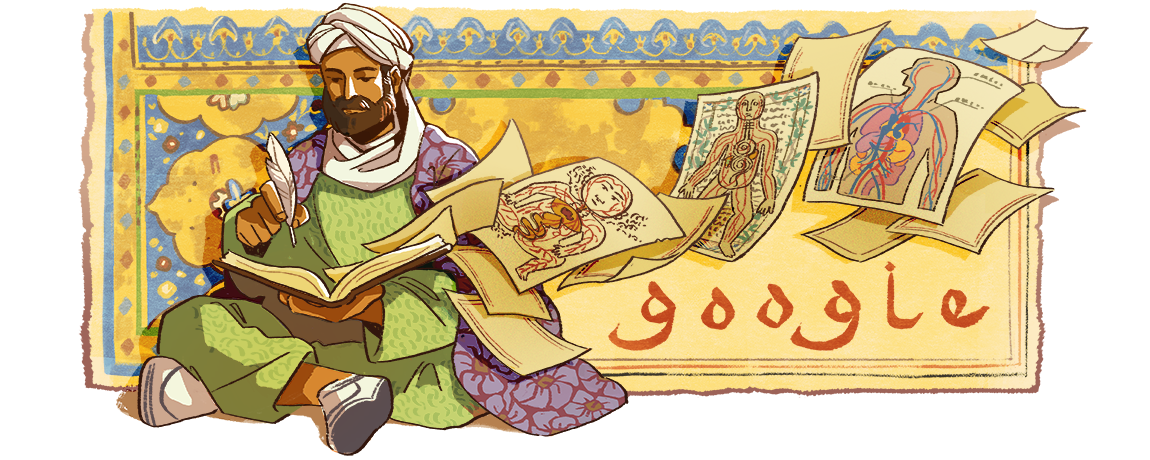
Astronomy, medicine, theology, physics, arithmetic, poetry — there was seemingly no discipline left untouched by the renowned polymath Avicenna, celebrated today by Google Doodle in honor of what would be his 1,038th birthday.
Also known as Ibn Sīnā, Avicenna was one of the most influential thinkers of the medieval Islamic world. Born in 980 during the Islamic Golden Age, Avicenna was a self-taught intellectual. Growing up in Afšana, a village near Bukhara in what is present-day Uzbekistan, Avicenna learned Indian arithmetic from a grocer, pursued an intense study of Aristotle’s Metaphysics during his teenage years and began studying medicine at age of 16.
Avicenna was also a prolific writer, authoring at least 131 books. His contributions to medicine were particularly significant. Al Qanun fil-Tibb, or the Canon of Medicine, is a monumental medical encyclopedia that was translated into Latin in the 12th century and used as the primary text for European medical courses until the 17th century.
Avicenna’s work was the first to recognize diseases like tuberculosis and postulate that illnesses could spread through soil and water. The Canon, having established some of the fundamentals of anatomy, pediatrics, and gynecology, is now recognized as laying the groundwork for Western medicine.
Avicenna also wrote extensively on early Islamic philosophy. One of his most famous works, the Book of Healing, is a science and philosophic encyclopedia intended to cure ailments of the soul. Also called the Cure, Avicenna’s metaphysics is said to have had a major impact on European scholasticism, and in particular the Italian theologian Thomas Aquinas.
In June 1037, Avicenna was struck with severe colic, a disease of the abdomen. He was 58 when he died, and laid to rest in Hamadan, Iran.
More Must-Reads from TIME
- Why Trump’s Message Worked on Latino Men
- What Trump’s Win Could Mean for Housing
- The 100 Must-Read Books of 2024
- Sleep Doctors Share the 1 Tip That’s Changed Their Lives
- Column: Let’s Bring Back Romance
- What It’s Like to Have Long COVID As a Kid
- FX’s Say Nothing Is the Must-Watch Political Thriller of 2024
- Merle Bombardieri Is Helping People Make the Baby Decision
Contact us at letters@time.com